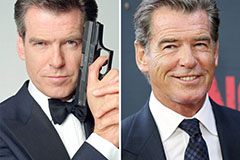The WWF Championship Belts hold a special and storied area in the record of specialist fumbling. Greater than mere devices, these substantial symbols of triumph represent the peak of success, the end result of blood, sweat, and tears dropped within the settled circle. For decades, the sight of a wrestler hoisting a gleaming WWF (later copyright) champion belt over their head has actually been an renowned image, instantly well-known even to those with only a passing knowledge with the sporting activity. These belts are not just prizes; they are physical manifestations of stories, traditions, and the ever-evolving landscape of professional wrestling.
The history of WWF Champion Belts is as abundant and vibrant as the company itself. From the very early days of the World Wide Fumbling Federation (WWWF) and its inaugural champion, the lineage of these titles tells a compelling narrative of fumbling's development and improvement. The original WWWF Championship, held by the famous Friend Rogers, was a fairly basic design, a unlike the intricate and commonly personalized belts these days. Yet, it laid the foundation for a practice of symbolic hardware that would come to define wrestling excellence.
As the WWWF transitioned into the WWF under Vince McMahon Sr. and later his boy, Vince K. McMahon Jr., the champion belts developed in tandem with the business's expanding appeal. The " Huge Eagle" belt, associated with the Hulkamania age, ended up being an immediately recognizable symbol of fumbling's mainstream advancement in the 1980s. Its large, majestic eagle layout, usually draped over the broad shoulders of Hulk Hogan, epitomized the epic personalities and thriving appeal of the moment. This age cemented the championship belt as a crucial narration tool, a graph of supremacy and the ultimate reward that every wrestler aspired to achieve.
The 1990s introduced a brand-new age for the WWF, marked by a shift in battling style and the development of new super stars. This period also saw the intro of new WWF Champion Belts, reflecting the altering visual and the personalities holding them. The "Winged Eagle" belt, with its more detailed design including numerous plates and a prominent winged eagle, became the symbol of champs like Bret Hart, Shawn Michaels, and Rock Cold Steve Austin. This style is frequently thought about one of the most famous and cherished in wrestling history, representing a golden age for the business and its leading title.
The Attitude Era, a period of edgier storylines and rebellious characters, brought with it additionally advancement in the layout of the WWF Champion Belts. While the "Winged Eagle" continued to be temporarily, the development of the " Cigarette smoking Skull" belt, particularly created for Stone Cold Steve Austin, marked a separation from tradition. This unique belt, featuring a skull with smoke rising from its eye outlets, highlighted the defiant and anti-establishment persona of one of fumbling's greatest stars. It demonstrated the company's determination to personalize the championship to fit the personality, additional improving the storytelling capacity of the title.
The turn of the millennium and the eventual rebranding of the WWF to copyright saw further iterations of the champion belts. The "Undisputed Championship" era, complying with the procurement of copyright, introduced a new design that merged the WWF and copyright Globe Heavyweight Championships. This belt, while originally representing a marriage, ultimately gave way to the "Spinner" belt, famously connected with John Cena. This debatable style, featuring a large copyright logo design that might spin, was both admired and criticized for its showy and non-traditional look. No matter viewpoint, it came to be synonymous with Cena's leading reign and the period he specified.
Past the major world champion, the WWF Championship Belts incorporate a range of titles, each representing a different level of success and expertise within the firm. The Intercontinental Champion, frequently thought about the "workhorse" title, has a long and prominent background, held by many future globe champions. 1 Its various layouts for many years have shown its significance as a tipping rock to the centerpiece. Likewise, the United States Championship ( at first a copyright title brought over after the purchase), the Tag Group Championships (with their countless and often aesthetically distinctive layouts standing for the unity of a team), the Female's Championships ( developing via different layouts mirroring the expanding prominence of women's fumbling), and the different "hardcore" and "European" titles ( however now inoperative) all add to the rich tapestry of WWF/copyright champion history.
1.
The respected history of the Intercontinental Championship: copyright, Aug. 12, 2022.
www.youtube.com.
The style and building of WWF Championship Belts are considerable aspects of their allure. Usually crafted from steel plates ( generally zinc or brass) and natural leather bands, these belts are substantial icons of reputation and workmanship. The intricate outlining on the plates, wwf championship belts including firm logos, eagles, globes, and various other symbolic images, adds to their aesthetic appeal and historical value. The weight and feeling of a champion belt are typically explained by wrestlers as contributing to the sense of accomplishment and authenticity related to holding it.
The heritage of WWF Champion Belts prolongs much beyond the wrestling ring. They have actually become social icons, appearing in films, tv shows, and computer game. Replicas of these belts are very demanded by fans, working as concrete reminders of their preferred wrestlers and memorable periods. The image of a champion proudly showing their belt is deeply deep-rooted in popular culture, representing triumph and success in a broader sense.
To conclude, the WWF Championship Belts are far more than just attractive devices. They are potent signs of wrestling history, standing for the triumphs and tribulations of numerous athletes who have pursued success within the squared circle. From the easy styles of the very early days to the elaborate and tailored belts of the modern-day age, these titles have actually advanced along with the business, mirroring its changing landscape and the epic individualities who have held them. The heritage of these belts remains to withstand, fascinating followers and strengthening their area as legendary symbols of professional fumbling excellence.
 Jonathan Taylor Thomas Then & Now!
Jonathan Taylor Thomas Then & Now! Jonathan Lipnicki Then & Now!
Jonathan Lipnicki Then & Now! Loni Anderson Then & Now!
Loni Anderson Then & Now! Barbi Benton Then & Now!
Barbi Benton Then & Now! Pierce Brosnan Then & Now!
Pierce Brosnan Then & Now!